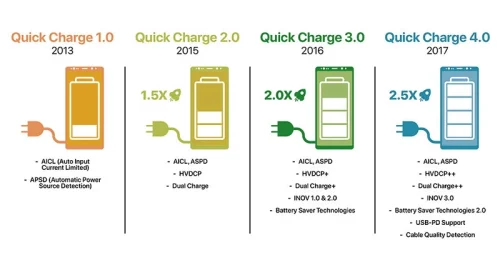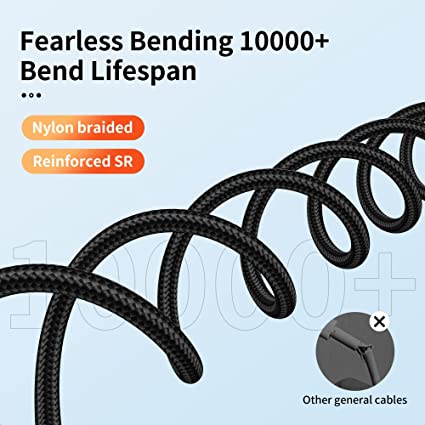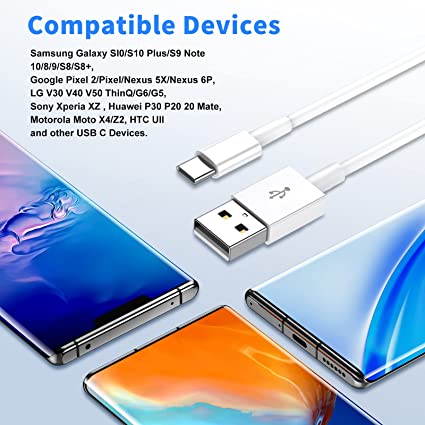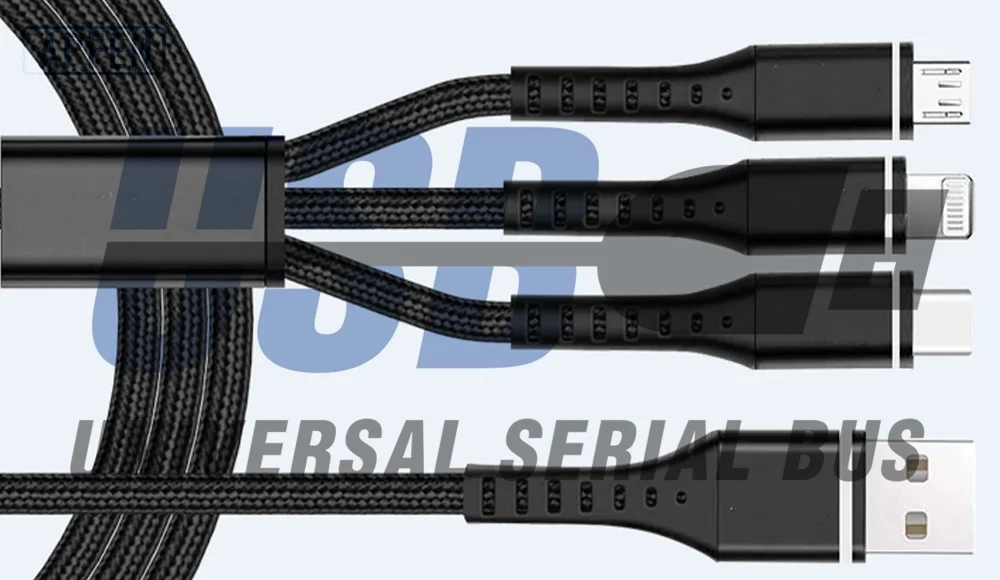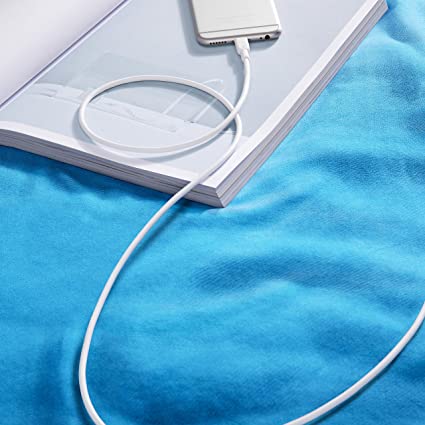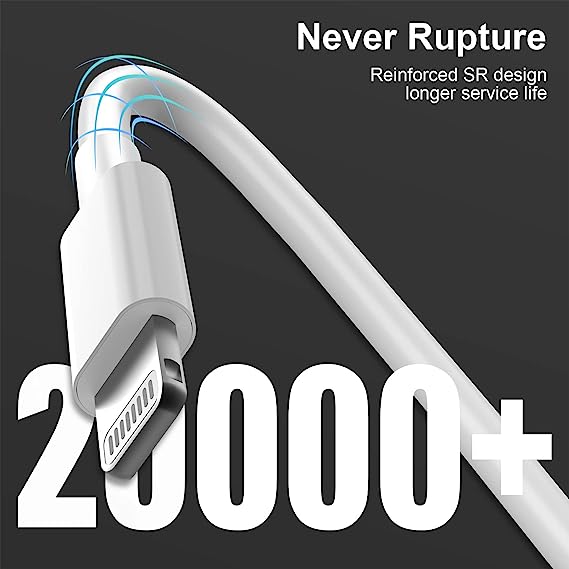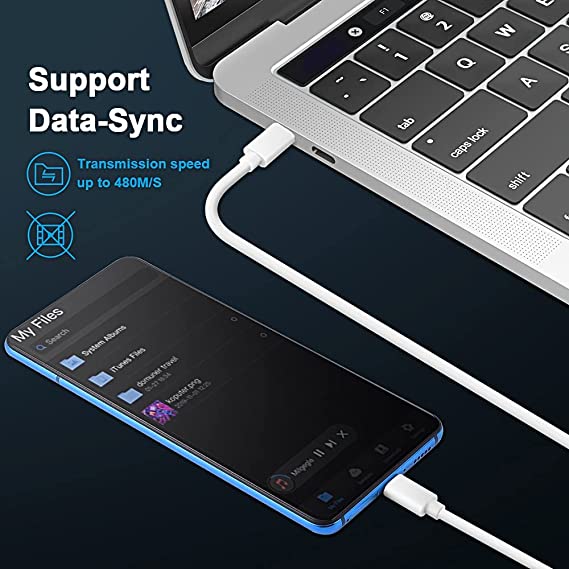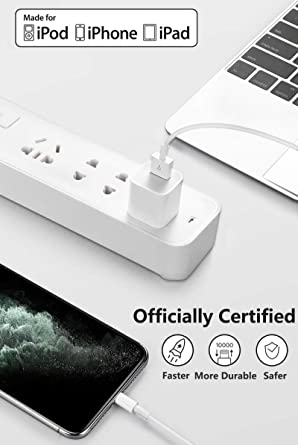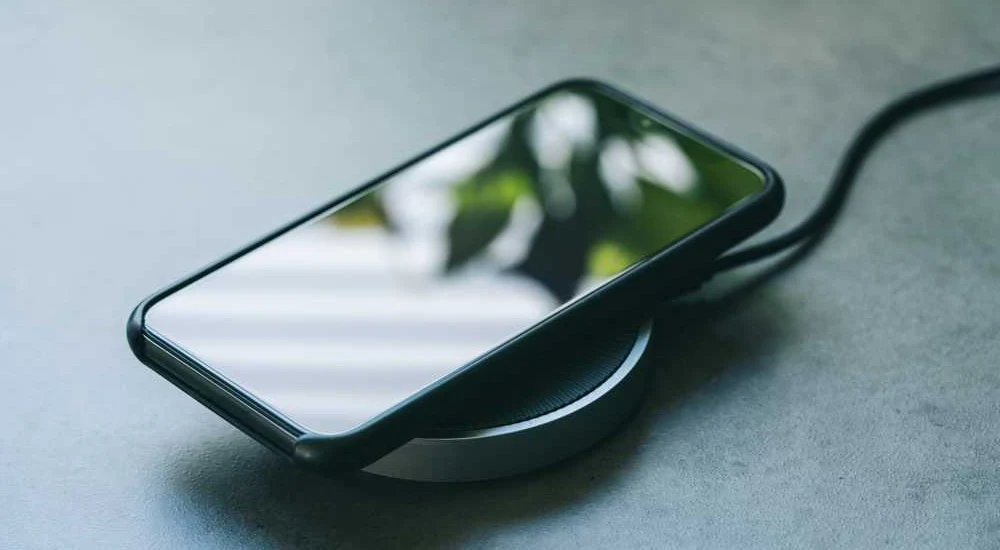Fully understand data cable USB charging protocol series.
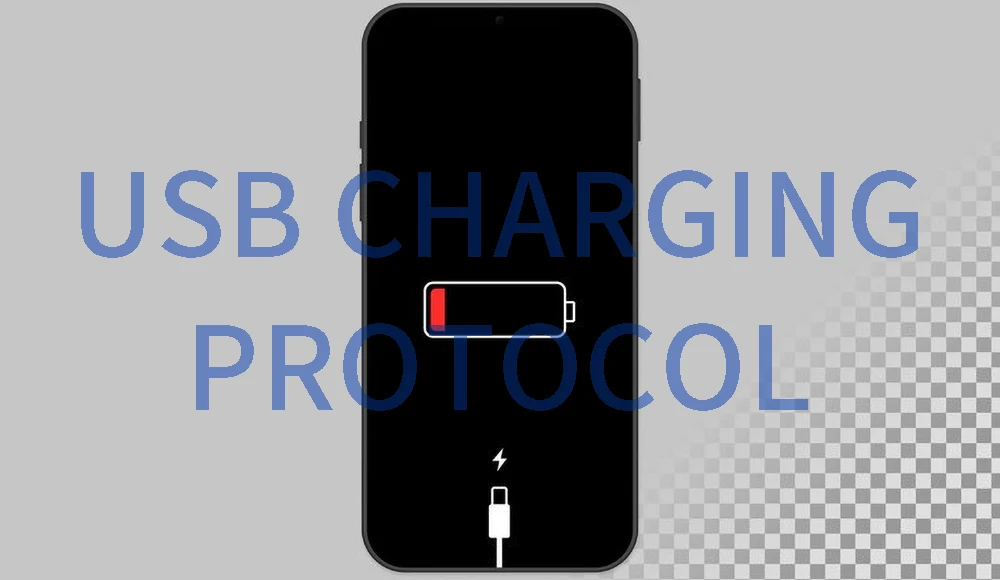
In a world driven by digital devices, fast charging has become the norm. We’ve all been there – the frantic rush to power up our smartphones, tablets, and laptops. The solution? Fast charging cables. But the market is teeming with a plethora of charging protocols, each claiming to be the fastest and most efficient.
In this comprehensive guide, we embark on a journey to unravel the intricacies of fast charging cables and explore the differences among mainstream charging protocols. No more mystery, no more confusion. Whether you’re a tech enthusiast or just someone who wants their device ready to roll in a hurry, this article will shed light on the fascinating world of fast charging, making your tech life a whole lot faster and more efficient. Let’s dive into the heart of charging technology and uncover the secrets of fast charging cables.
What Is The Usb Cable Charging Protocol?
The USB cable charging protocol refers to the set of standards and battery charging specifications that govern how electronic devices, particularly mobile devices like smartphones and tablets, receive power and charge their batteries when connected via a USB cable. This smart charging protocol enables devices to negotiate voltage, current and direction of power and data flow over the USB cable. Negotiations are governed by power rules and offer a range of voltage and current configurations. USB standards, USB-C and various fast charging protocols, among others, adhere to specific voltage and amperage levels to facilitate efficient charging.
Standard 3.0 USB ports typically provide a voltage output of 5V and an amperage output of 1A, which is suitable for smaller devices. However, for faster charging, USB-C allows for higher voltage outputs, such as 9V, 12V, or even higher, while still maintaining a compatible amperage level.
USB-C connector type in particular, has become popular for fast charging due to its support for higher power delivery, reaching up to 100W and 20V. This enables devices to fast charges at significantly faster speeds by increasing the voltage or amperage within the specified limits of the USB charging protocol.
By considering the voltage and amperage capabilities of USB charging protocols, manufacturers can develop devices and charging accessories that are compatible with various fast charging standards, providing users with the convenience of rapid and efficient charging.
The most common USB cable charging protocols include:
- USB Power Delivery (USB PD)
- Qualcomm Quick Charge
- USB Battery Charging (USB-BC)
- MediaTek Pump Express
- Adaptive Fast Charging (AFC) (developed by Samsung)
| USB Charging Standards | |||
|---|---|---|---|
| Types | Voltage | Current | Max power |
| USB 1.0 | 5V | 0.5A | 2.5W |
| USB 2.0 | 5V | 0.5A | 2.5W |
| USB 3.0 | 5V | 0.5A/0.9A | 4.5W |
| USB 3.1/3.2 (USB-C + USB-PD) | 5-48V | 0.5A/0.9A/1.5A/3A/5A | 240W |
| USB 4 (USB-C + USB-PD) | 5-48V | 0.5A/0.9A/1.5A/3A/5A | 240W |
Technology is rapidly evolving, and fast charging is poised to become the universal standard, gradually replacing average chargers. With advancements in integrated circuitry, charge controllers, adapters, and cords, smartphones could potentially recharge in just a few minutes instead of hours. Early-model fast chargers have gained popularity for their portability and quick charging capabilities. As this technology becomes more accessible, fast charging will continue to improve. Stay tuned for new standards and developments in the market as fast charging continues to evolve.
What is the USB Charging Protocol Fast Charging Principle?
Fast charging is at the heart of modern mobile technology. To grasp its essence, we must delve into the electric energy formula we learned back in high school: P (Power) = V (Voltage) x I (Current). The traditional USB charging standard of 5V/0.5A is simply insufficient for our power-hungry smartphones. For fast charging, manufacturers bump the voltage up from 5V to 9V or 12V and beyond, or increase amperage to 3A and above.
Here, we explore the principles and various methods that power the world of fast charging:
Raising the Current (I):
Boost current under a certain voltage range (4.5V-5V). Usually, parallel circuits are used for current shunting. When constant voltages are connected in parallel, the pressure shared by each circuit decreases and the pressure endured by each circuit decreases. For smartphones, this means increasing high current-carrying capabilities by increasing the number of charging cable wires or the number of contacts in a USB port. VOOC flash charging achieves this by increasing the number of charging cable lines or USB port contacts, and Huawei SuperCharge follows a similar principle. This approach helps avoid excessive heat build-up inside the device during the transition from high pressure to low pressure.
- The simplest way to turbocharge charging speed is by elevating the current. It’s the express route to faster charging.
- Qualcomm Quick Charge (QC) is a notable example, allowing for up to 5V/2A (10W) output, a common fast charging solution.
- OPPO’s VOOC and OnePlus DASH also increase the current, offering up to 5V4A (20W), outpacing Qualcomm’s QC, but with specific requirements.
- Huawei’s Super Charge Protocol (SCP) enhances current with options like 5V4.5A/4.5V5A (22W), delivering faster charging than VOOC/DASH.
Boosting Voltage (V):
Increase the charging voltage (around 7-20V) during the charging process to enhance the charging power. Typically, the charging process in regular smartphones involves reducing the 220V voltage to 5V through the charging adapter, and then further reducing it to 4.2V within the phone’s internal circuit before delivering power to the battery. This voltage reduction process generates heat energy. With high-voltage and low-current fast charging, the output voltage of the charging adapter is increased to 7-20V, and then reduced to 4.2V inside the phone. This entire charging process produces more heat energy, resulting in significant heat generation in the charger and the phone, which can hamper charging efficiency.
- When current can’t be pushed further, raising the voltage takes precedence. Qualcomm Quick Charge 2.0 (QC2) exemplifies this approach, supporting up to 9V/2A (18W).
- Huawei’s Fast Charge Protocol (FCP) and Samsung Flash Charge stem from QC2.0, emphasizing high voltage and, consequently, heat generation.
- MediaTek Pump Express Plus (PE+) offers options of 5/7/9/12V 3/4.5A (up to 15W), though it has limited device support.
- USB Power Delivery 1.0 (PD) is a versatile solution, supporting multiple voltages: 5/12/20V, 1.5/2/3/5A (up to 100W), designed for various devices, including laptops, and ushering in the era of new connectors.
Dynamic Voltage and Current Adjustment:
- Recognizing the limitations of high current and high voltage, dynamic adjustments in both factors come into play.
- Qualcomm Quick Charge 3.0 (QC3) illustrates this principle, with the ability to dynamically adjust voltage up to 20V, delivering 18W with a 200mV variance.
- Qualcomm Quick Charge 4.0 (QC4)/4+ is compatible with USB-PD, expanding the cross-compatibility of fast charging.
- USB Power Delivery 2.0/3.0 offers flexibility by supporting solutions up to 100W, especially designed for various devices and laptop charging.
- MediaTek Pump Express Plus 2.0 (PE+2) dynamically adjusts voltage from 5V to 20V in 0.5V increments.
- MediaTek Pump Express Plus 3.0 (PE+3) innovatively bypasses the charging IC for reduced heat generation, although it has limited device support.
By employing these different charging methods, manufacturers aim to provide faster charging solutions while managing heat generation and optimizing charging efficiency.
Mainstream Data Cable Charging Protocol Type.
Mainstream Data line charging protocol refers to the commonly used standards and technologies that enable charging and data rates transfer through data cables. These protocols define the specifications and capabilities of the cables, ensuring compatibility and efficient charging across a wide range of devices. Understanding the mainstream data cable charging protocols is essential for selecting the appropriate cable for specific devices and ensuring optimal charging and data transfer performance. Here are some mainstream data cable charging protocols are:
Public Charging Protocol Type
USB-PD(1.0-3.1)
USB Power Delivery (USB PD) is a charging protocol that provides a flexible and dynamic power delivery system for devices using a USB-C connection. USB PD has gone through several iterations, including versions 1.0, 2.0, 3.0, and 3.1, each offering increased capabilities and power options.
- USB PD 1.0 is the initial version of the standard, providing fixed power profiles. It supports four power profiles ranging from 10W to 60W, suitable for smartphones, tablets, notebooks, hubs, and docking stations.
- USB PD 2.0 and 3.0 introduced more dynamic power profiles, allowing for greater flexibility in voltage and current settings. These versions offer profiles ranging from 10W to 100W, accommodating a wide range of devices. The profiles vary in voltage, current, and power output, supporting devices such as headphones, smartphones, tablets, small laptops, large laptops, displays, and workstations.
- USB PD 3.1 further expands the power delivery capabilities. It introduces Standard Power (SPR) and Extended Power (EPR) ranges. The SPR range is similar to the USB PD 3.0 standard, supporting up to 100W. The EPR range incorporates new voltage options of 28V, 36V, and 48V, with maximum power outputs up to 240W. These higher power options are suitable for displays, gaming laptops, and desktop PCs.
If you are interested to know more about power delivery, you can check this comprehensive guide about USB Power Delivery performance and versions.
QC(1.0-5)
Quick Charge (QC) is a fast charging protocol developed by Qualcomm for mobile devices using Qualcomm Snapdragon processors. Quick Charge technology allows for faster charging times and improved battery performance. The Quick Charge protocol has evolved through several versions, including Quick Charge 1.0, 2.0, 3.0, 4, and the latest version, Quick Charge 5.
- Quick Charge 1.0 ( QC 1.0) was the initial version, offering up to 10W of power output. It introduced features like Automatic Input Current Limit (AICL) and Automatic Power Source Detection (APSD), providing basic fast charging capabilities.
- Quick Charge 2.0 (QC 2.0) expanded the voltage and current options, supporting higher power outputs up to 18W. It introduced the concept of different charging classes and offered more efficient charging compared to its predecessor.
- Quick Charge 3.0 ( QC 3.0) further improved charging speed and efficiency by introducing a wider range of voltage options and more precise voltage adjustment. It provided up to 36W of power output and implemented features like HVDCP (High Voltage Dedicated Charging Port) and Dual Charge, which enabled faster and simultaneous charging of multiple devices.
- Quick Charge 4 (QC 4.0) and Quick Charge 4+ (QC 4.0+) brought additional enhancements, including support for USB Power Delivery (USB PD Specification) and Programmable Power Supply (PPS). These versions offered faster charging speeds, improved thermal management, and advanced safety features.
- The most recent iteration, Quick Charge 5, introduced in 2020, is the most advanced version to date. It supports charging speeds of 100W or higher, allowing devices to charge up to 100% in just 15 minutes. Quick Charge 5 incorporates features like Dual Charge, Intelligent Thermal Balancing, and better thermal management to ensure safe and efficient charging.
PPS
The PPS (Programmable Power Supply) charging protocol has emerged as an innovative technology revolutionizing the world of device charging. With its ability to facilitate dynamic communication between chargers and devices, PPS optimizes charging speed by precisely adjusting voltage and current output. This intelligent approach ensures swift and efficient charging while safeguarding the battery from potential harm.
PPS Power Delivery Chargers represent a significant leap forward compared to traditional chargers. Leveraging sophisticated charging algorithms, they adapt the voltage and current output to meet the specific requirements of the device being charged. This results in expedited charging times without overwhelming the device or posing any risk to its battery health.
While PPS is a relatively recent development, an increasing number of manufacturers are embracing this technology in their USB charger offerings. Notable examples of PPS-compatible chargers include the Anker PowerPort Atom PD 4, the Aukey Omnia Mix4, and the Samsung Super Fast Charger.
Private Charging Protocol Type
Apple Fast Charge
Apple has introduced fast charging support starting from the iPhone 8, allowing users to charge their devices more rapidly. If you’re still using an older iPhone power adapter, you might not be taking full advantage of your device’s capabilities as those adapters typically provide a power output of only 5W.
To achieve fast charging speeds, Apple utilizes the USB Power Delivery standard. According to Apple, utilizing fast charging can offer a 50% increase in battery life within just 30 minutes. However, to experience these accelerated charging speeds, you’ll need to use an adapter with a minimum power rating of 18W, along with a USB-C-to-Lightning cable. While using a more powerful adapter won’t harm your phone, it’s unlikely to result in any faster charging times.
Apple does offer a 96W USB-C Power Adapter for its laptops, although tests indicate that even with this charger, the iPhone 13 models charge at a maximum of 22W.
Huawei FCP/SCP
Huawei’s Fast Charge Protocol (FCP) and Super Charge Protocol (SCP) are two charging technologies developed by Huawei. FCP was primarily used in the earlier days and falls under the category of high-voltage fast charging. However, the main focus now lies on SCP, which is currently supported up to 40W and is exclusive to Huawei devices.
SCP, also known as Super Charge Protocol, represents Huawei’s latest and more advanced fast charging technology. It provides faster charging speeds compared to FCP and is designed specifically for Huawei devices. With SCP, users can benefit from efficient and rapid charging experiences, allowing them to quickly replenish their device’s battery.
It’s important to note that SCP’s charging capability currently reaches up to 40W, which is impressive in terms of fast charging technology. However, it is worth mentioning that SCP is limited to Huawei devices and is not compatible with other brands or models.
Oppo SuperVooc
Oppo’s SuperVooc Flash Charge is an impressive fast charging technology developed by the company. Known for its pioneering advancements in this field, Oppo currently holds the record for the fastest charging speed with its groundbreaking 240W SuperVooc technology. This incredible innovation allows a 4,500mAh battery to be fully charged in a mere nine minutes, setting a new benchmark for rapid charging.
To further enhance performance and reliability, Oppo has incorporated gallium nitride (GaN) batteries in its phones, making it the first major manufacturer to utilize this advanced battery technology. SuperVooc Flash Charge is available in various iterations, each offering unique charging capabilities. The fastest variant utilizes 10V and 6.5A to charge Oppo phones at an impressive 65W. This ensures swift and efficient charging, allowing users to power up their devices in no time.
Another notable version is SuperVooc 2.0, which combines 10V of electrical force with 5A of power, resulting in a maximum charge of 65W. While it offers slightly slower charging times compared to SuperVooc Flash Charge, it still provides remarkable speed. Vooc 4.0, introduced in 2020, is the slowest among the SuperVooc family, with a maximum charging speed of 30W at 5V/6A. Despite being the slowest, it still delivers efficient charging performance.
Xiaomi Mi Turbo Charge
Xiaomi Mi Turbo Charge is an advanced fast charging technology developed by Xiaomi, a leading smartphone manufacturer. This innovative charging solution is designed to deliver rapid and efficient charging speeds to Xiaomi devices, ensuring that users can quickly power up their devices and stay connected.
Mi Turbo Charge employs intelligent charging algorithms and optimized power management techniques to maximize charging efficiency. By intelligently adjusting voltage and current levels, it optimizes the charging process to minimize charging times without compromising the safety or longevity of the device’s battery.
VIVO Flash Charge
VIVO Flash Charge Protocol is a cutting-edge fast charging technology developed by VIVO, a prominent smartphone manufacturer. This proprietary charging protocol is designed to provide users with rapid and efficient charging capabilities, enabling them to quickly recharge their VIVO devices and stay connected for longer periods.
The VIVO Flash Charge Protocol leverages advanced charging algorithms and optimized power management techniques to deliver fast and safe charging. By intelligently adjusting the voltage and current levels, it maximizes the charging efficiency while ensuring the longevity and safety of the device’s battery.
OnePlus WARP / Dash
OnePlus has incorporated advanced charging technologies called Dash Charge and Warp Charge to provide users with rapid and efficient charging experiences. These technologies not only deliver impressive charging speeds but also ensure the safety and longevity of OnePlus devices.
Warp Charge, licensed from Oppo’s Vooc, is the latest and most advanced charging technology utilized by OnePlus. With Warp Charge, OnePlus devices can reach power outputs of up to 65W, as seen in the OnePlus 10 Pro. This means that you can achieve a full charge in just under 40 minutes, significantly reducing the time spent waiting for your device to recharge. Wired charging is facilitated through a 5V/6A adapter and a proprietary USB-C cable, allowing for efficient power delivery.
While achieving high-speed wireless charging poses challenges due to heat generation, OnePlus has implemented an intelligent approach. Instead of relying on the standard 5V/6A formula, OnePlus uses 20V at 1.5A for wireless charging. This voltage-focused approach minimizes heat buildup, ensuring a safer and more reliable wireless charging experience at speeds of up to 30W.
It’s worth noting that older OnePlus phones utilized Dash Charge technology, which supported charging speeds of up to 20W. However, if you own a OnePlus 8 or a newer model, your device is equipped with the upgraded Warp Charge technology, offering vastly improved charging speeds.
Realme DART
Realme DART Charging is a proprietary fast-charging technology developed by Realme for its smartphones and compatible chargers. It is designed to provide a rapid and efficient charging experience for Realme devices, allowing users to charge their smartphones quickly and get back to using their devices without long downtimes. The exact technical details of the Realme DART Charging protocol, such as voltage, current, and communication standards, may vary between different Realme smartphone models and charger types. It is essential for Realme users to use compatible chargers and cables to maximize the benefits of the DART Charging technology for fast and convenient charging.
| Comparison Table Between Different Charging Protocols | ||||||
|---|---|---|---|---|---|---|
| Programmable Power Supply (PPS) | Power Delivery (PD) | Quick Charge (QC) | Dash Charging | Warp Charging | VooC / Super VooC | |
| Voltage & Current | Voltage and current adjusted as per demand of the phone’s battery. Goes up to 100W | Goes up to 100W | QC 3.0 allows up to 80% charge in 35 mins (18W) | Provides 63% charge in 30 mins. Output ranges from 30W to 65W | Improved Speed & Safety, Offers varying outputs from 25W to 140W | Low-voltage, fast-charging solution |
| Great Extending Battery Life | Works in sync with PPS as well | Greatly extends battery life | QC 3.0 is limited to Phones & Tablets (18W) | Easy to perform high-intensity tasks | Full charge in less than an hour | Heat gets dissipated in the adapter only. Five-minute charge provides a hundred minutes of gaming or four hours of video watching. |
| Less Heat Generated | Goes up to a max of 45W | Up to 70% faster than a normal USB type charger | QC 4.0 works on PD via Type-C (27W) | Removes alarming heat generated quickly | Heat gets dissipated in the adapter only | Low-voltage, fast-charging solution |
| More Flexibility | Ensures over-charging doesn’t take place | QC 5.0 allows 50% in 5 mins. (100W) | Designed for a maximum output of 20W | For effective cooling, OnePlus 6T McLaren Edition has an 8-layer protection board | Uses the highest level of multi-layered protection | Improved Speed & Safety |
| Multiple Operating Modes | Laptops / Tablets / Phones / MacBooks | Works with a wide range of devices including laptops, tablets, phones, MacBooks | Designed for phones and tablets | Primarily designed for OnePlus devices | Primarily designed for OnePlus devices | Efficient charging for Vivo devices |
| Most Commonly Used by | Samsung | Adopted by Apple | Designed for devices with Qualcomm Snapdragon processors | OnePlus | OnePlus | Oppo smartphones |
What determines USB charging speed?
It’s worth noting that charging speed doesn’t just depend on the charging method used. There are several other factors that may affect charging speed, including:
- Battery capacity: Regardless of the charging method used, devices with larger batteries will take longer to charge than devices with smaller batteries.
- Power Output: The amount of power being delivered by the charger can greatly affect charging speed. A higher power output will result in faster charging.
- Cable quality: The quality of your charging cable can also affect charging speed. Low-quality cables may not be able to handle the high power output of fast charging methods, resulting in slower charging.
- Device Compatibility: Not all devices support all charging methods. Make sure your device is compatible with the charging method you use to ensure optimal charging speeds.
As we reach the end of our exploration into these fast charging protocols, we encourage you to choose the one that best fits your specific device and charging needs. The era of private agreements is gradually giving way to a more unified market, where the USB Power Delivery (PD) and Qualcomm Quick Charge (QC) standards have taken significant strides towards becoming industry benchmarks. This means that in the future, these proprietary protocols are likely to diminish in significance. It’s important to note that our factory does not possess authorization for these private agreements and, as a result, cannot manufacture products based on them.
Choosing the right fast charging protocol for your specific device and charging requirements is paramount. Your device’s performance and battery health depend on it.
If you’re interested in exploring the world of fast charging and upgrading your charging accessories, we invite you to visit our brand, SZapphone. Our range of high-quality chargers and cables are designed to enhance your charging experience, ensuring that you’re always powered up and ready to go. Make the most of fast charging and elevate your device’s performance with SZapphone. Don’t settle for slow charging; embrace the future of fast charging technology and stay ahead of the curve with SZapphone. Your devices will thank you for it.
Can I use any charging cable with a fast charger?
No, it is important to use a high-quality charging cable that can match the high power output of the fast charger and electronic device. Mainly reflected in three aspects: charging protocol matching, connector port matching, and quality assurance.
Using poor quality or mismatched cables can result in slower charging or even damage to your device.
Do all devices support fast charging?
No, not all devices support all types of fast charging. Be sure to check your device specifications to ensure compatibility with the charging method you plan to use.
Do all USB cables support fast charging?
Not necessarily, and all USB cables support fast charging. You need a special USB cable with the fast charging protocol written into it for fast charging. Fast charging cables have thicker wires and better insulation, which allows a greater amount of power to flow through them without overheating.
Can I use a fast charger to charge small electronic devices?
Yes, you can use a fast charger to charge small electronics (earphones, watches, etc.). However, charging speed will still be limited by the device’s battery capacity.
Share This Artcle:

Fast delivery
Fastest delivery within 22 days

Quick proofing
Fastest 3-day proofing cycle

After-sale protection
24-month long warranty

1V1Customer Service
Professional customer service follow-up

